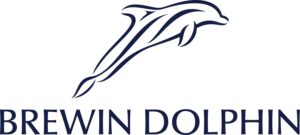
We welcome Guy Foster, Chief Strategist for Brewin Dolphin as he takes a look at the highs and lows of 2021 and considers what the next 12 months could have in store for investors
Another year has passed and most investments performed well, but the year has not been without incident. The context for everything that happened in 2021 was the ongoing battle against coronavirus. The year offered the hope of a turning point, but Covid-19 has proven to be difficult to tame. Battles are hard won, and they come at a cost. Last year saw a further 200 million reported cases globally and no doubt plenty more unreported.
Aside from avoiding illness, many hopes for 2021 included an end to lockdowns and restrictions, but for many they seemed to ebb and flow instead. In general, though, the restrictions were at least lighter than they had been in 2020, while many businesses had adapted to new more challenging working conditions. That alone meant that it was likely that the economy, profits and share prices would continue to recover.
The crucial factor facilitating that easing was the rollout of newly approved vaccines. While the virus has continued to spread and evolve, vaccinations were effective at reducing the seriousness of cases. This in turn reduced the risk of hospitals becoming overloaded, which reduced the need for stringent lockdown measures. So, ultimately, the hoped-for economic and financial recovery emerged.
The big bazooka
Despite the promise of vaccines, policymakers weren’t taking any chances on the economy. For most of the year, central banks kept interest rates exceptionally low, and pursued asset purchases (often referred to as ‘quantitative easing’). Governments erred on the side of caution too. The UK’s furlough scheme remained in place for most of the year, and in the US the January inauguration of President Joe Biden foretold a year of fiscal support.
Since the onset of Covid-19, European governments tended to focus on keeping employees in work. This was in contrast to the US, which boosted financial support for job losers through enhanced unemployment benefits. These again, remained in place for most of the year. However, American consumers also received three ‘economic impact payments’, known as stimulus cheques. The last and largest of these arrived in March last year.
If policymakers were determined to err on the side of caution, as the year went on it became increasingly clear that they had indeed erred. The economic recession caused by Covid-19 and lockdowns was unprecedentedly harsh but also narrowly focused, mostly on the physical customer-facing service sectors. Demand for physical products and digital services boomed as consumers found themselves rich in time and cash from reduced commuting and socialising, while enhanced unemployment benefits in the US even seemed to incentivise people to leave their jobs.
Prices surge amid supply disruption
Therein lay the beginnings of the huge demand and supply mismatch of 2021, which caused shortages of goods and employees but soaring demand for many products, actively fuelled by economic stimulus. The textbooks regard this to be a recipe for inflation and for once the textbooks were right. In the US, consumer price inflation reached levels not suffered since the early 1980s. Policy missteps were not the only cause. Many companies also misjudged demand and reduced inventory accordingly. Shortages of semiconductors caused knock-on shortages of vehicles, sending used car prices soaring.
Across the spectrum of energy resources supply was tight everywhere. Oil production had been reduced by OPEC+ (the cartel which organises oil supply to the market to try to reduce price volatility) which was reluctant to raise supply again when emerging Covid-19 strains could undermine transport demand in unpredictable ways. Coal resources were being shuttered, particularly in China, to try to address pollution and environmental damage ahead of the Winter Olympics, causing higher demand for other energy sources. At the same time, European renewable power suffered from a series of setbacks, with too little rain for hydro generators and too little wind for wind farms. A shortage of HGV drivers delayed the delivery of oil to filling stations, resulting in queues and panic buying. This kind of supply disruption represented an additional under-appreciated source of Covid-19 risk. Employee absences and stricter working regulations often made it harder to produce goods. Port closures and the sheer weight of demand made it more expensive and slower to transport them. It seems fair to regard the coincidence of all these events as something of a perfect storm, and unusually part of that storm took place in a canal.
Kicking off the whole logistics fiasco was the grounding of the Ever Given container ship, blocking the Suez canal and disrupting the flow of an estimated $9bn worth of goods per day. Although the ship was refloated just six days later, the knock-on effects lasted months. Receiving ports in Europe had to try to accommodate a surge in arrivals since the blockage was cleared.
Markets strong despite inflation anxiety
Generally over the course of the year, and despite anxiety over inflation, financial markets performed well. Low interest rates and high inflation proved a toxic combination for those leaving their savings in cash. Inflation-protected bonds have become very expensive such that they now offer underwhelming returns. Technology shares performed well, powering the US equity market to successive new highs.
The juxtaposition* of spare time, technological advances and ample cash saw some unusual financial phenomena. Cryptocurrencies had a great start to the year before stalling. Non-fungible tokens, the proof of ownership of digital content, saw some eyewatering sales of unimpressive art works. An obscure online Reddit group called Wall Street Bets amassed members and initiated positions in stocks, driving a few stocks, most notably US video game retailer GameStop, dramatically higher.
Rival models of stakeholder capital
China as usual danced to its own tune. Despite the tailwinds for technology and internet-related stocks, China’s highest profile new economy stocks sagged. The wealth being amassed by company founders stood at odds with the current Chinese doctrine of common prosperity. Regulations and taxes on companies which don’t do enough to benefit non-shareholders created a fog obscuring the profit outlook for these firms. It is worth noting that this long-term uncertainty had a more damaging impact on share prices than a few years of lost earnings during a pandemic.
It also comes at a time when investors around the world are asking themselves how they can steer the companies they invest in to provide benefits to a broader range of stakeholders. At the vanguard of this push was the net zero initiative, which attempts to address the market failure of climate change. Companies individually planning to operate without carbon emissions would risk failure as they were undercut by less altruistic peers. However, collaborative commitments by investors and investee companies are enabling and requiring companies to plan for a future in which the private sector can address climate change, rather than fight against it.
Looking ahead to 2022
In the shorter term, the outlook for investments remains reasonably bright. We think of economies as going through something of a cycle. The current rotation of that cycle began in the summer of 2020 as the economy recovered from the shock of initial Covid-19 lockdowns; it continued in 2021 as the economy expanded. Historically, these economic conditions have been the best for investments in stocks.
Estimates for global economic growth in 2022 are a little slower than last year’s and that may mean we’re around the middle of the current economic cycle. In the second half, the pace of equity gains tends to slow but remain positive. The most dangerous time to be invested in stocks comes when the economy slips into recession, but for 2022 consumer demand should be robust as jobs growth continues and the economy reopens. Investment demand should also be robust as companies invest in digital routes to market and shore up their supply chains. So while returns might be more measured than they were in 2021, we still expect them to be positive.
Never ending? Of course, striving to protect wealth against inflation means accepting uncertainty, which has been in plentiful supply since the onset of the pandemic. The latest twist in the story saw the Omicron variant, first detected in South Africa, prove more transmissible than previous strains and able to evade vaccines to some extent. Lockdown measures returned to differing extents in differing regions, but the financial market impact was brief and minor.
Why? Partly because the private sector has shown it can quickly evolve to find new ways to serve customers when even something as fundamental as physical proximity is impractical; partly because the apparently reduced virulence fits with historical examples of viruses evolving to become less harmful over time; and partly because while last year may have been strewn with policy errors, it has shown that policymakers absolutely do have the tools available to boost demand when that is what is required. Last year’s experience will hopefully help them to calibrate those tools better in the future. There have been plenty of attempts to capture the vagaries of economic policymaking over time. This is one of my favourites:
“An economist is someone who says, when an idea works in practice, ‘let’s see if it works in theory’” Walter W. Heller, former chairman of the Council of Economic Advisers
*the fact of two things being seen or placed close together with contrastic effect
The value of investments, and any income from them, can fall and you may get back less than you invested. Information is provided only as an example and is not a recommendation to pursue a particular strategy. We or a connected person may have positions in or options on the securities mentioned herein or may buy, sell or offer to make a purchase or sale of such securities from time to time. In addition we reserve the right to act as principal or agent with regard to the sale or purchase of any security mentioned in this document. For further information, please refer to our conflicts policy which is available on request or can be accessed via www.brewin.co.uk
Prefer to watch a video?
Click here for a macro update with Janet Mui, Brewin’s Head of Market Analysis (approx 9 minute watch)
Click here for an Asset Allocation update with Paul Danis Brewin’s Head of Asset Allocation (approx 7 minute watch)




